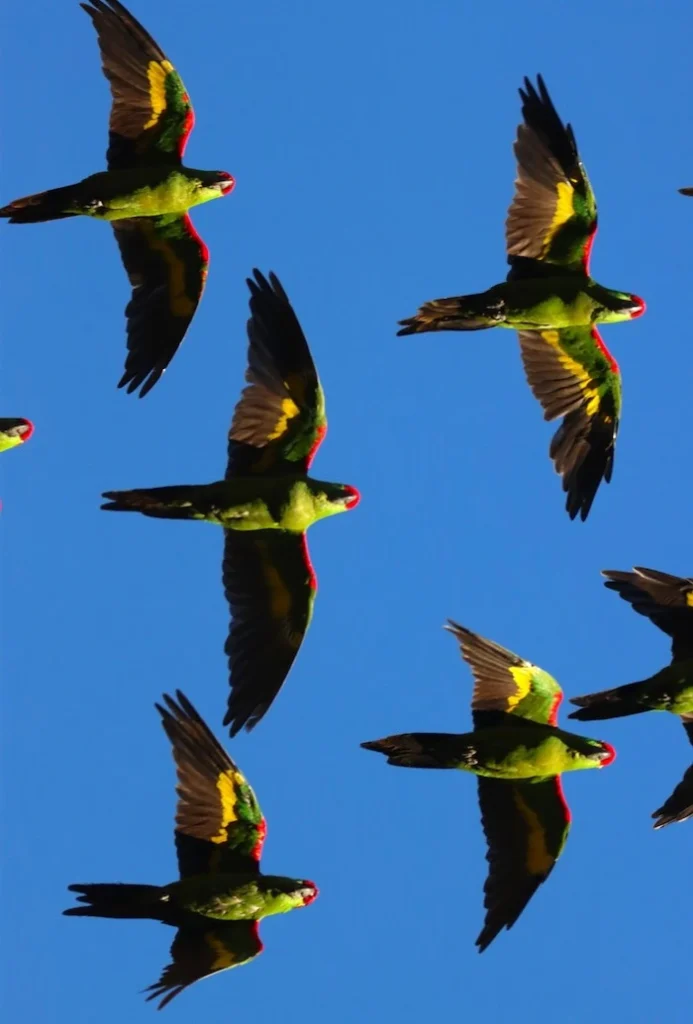A recent collaboration between public and private sectors in Mexico has revealed that the population of thick-billed parrots has reached approximately 2,500 individuals—a growth of over 10% compared to records from 12 years ago.
This figure emerged from a recent population survey conducted in a protected area in Chihuahua, a region where these striking birds once thrived and ranged as far north as the United States.
The thick-billed parrot, a symbol of the temperate forests in the Sierra Madre Occidental, historically inhabited areas of Arizona and New Mexico. However, it has been listed as endangered in Mexico since 1995. In response, a series of conservation studies and management initiatives have focused on protecting the species and restoring its habitat through large-scale reforestation efforts.
Led by the National Commission of Protected Natural Areas (CONANP) and the conservation group Organización Vida Silvestre (OVIS), these initiatives have also involved local communities and organizations across Mexico and the US. According to OVIS, these collaborative efforts are showing promising outcomes, as evidenced by the parrot population’s steady increase.

Pedro Álvarez-Icaza, the head of CONANP, emphasized the significance of this progress. “This emerging success highlights the value of collaboration between society and government and supports a vision for healthy ecosystems and sustainable communities. CONANP is committed to bolstering these policies and practices in the coming years,” he stated.
The latest census suggests that as communities in the region adopt sustainable forestry management, the thick-billed parrot population is likely to grow even further.
Sergio Jiménez, executive director of OVIS, expressed gratitude to the institutions involved. “This collective effort, guided by our scientific director Ernesto Enkerlin Hoeflich, is delivering results after three decades of dedication. It gives us hope for other endangered species and underscores the importance of cooperation, persistence, and long-term planning for effective conservation,” he said.
Efforts to restore the parrot population in the US began as early as the 1980s in Arizona’s sky islands—isolated mountain ranges rising above desert lowlands. Although initially seen as ideal reintroduction sites, challenges such as predation by American goshawks hindered the parrot’s survival. In October 2020, conservationists proposed reintroducing the birds at higher elevations within the Chiricahua Mountains to improve their chances.
If Mexico’s parrot population continues to thrive, these charismatic birds may one day naturally reclaim their former habitats in the Southwestern United States without further scientific intervention.
